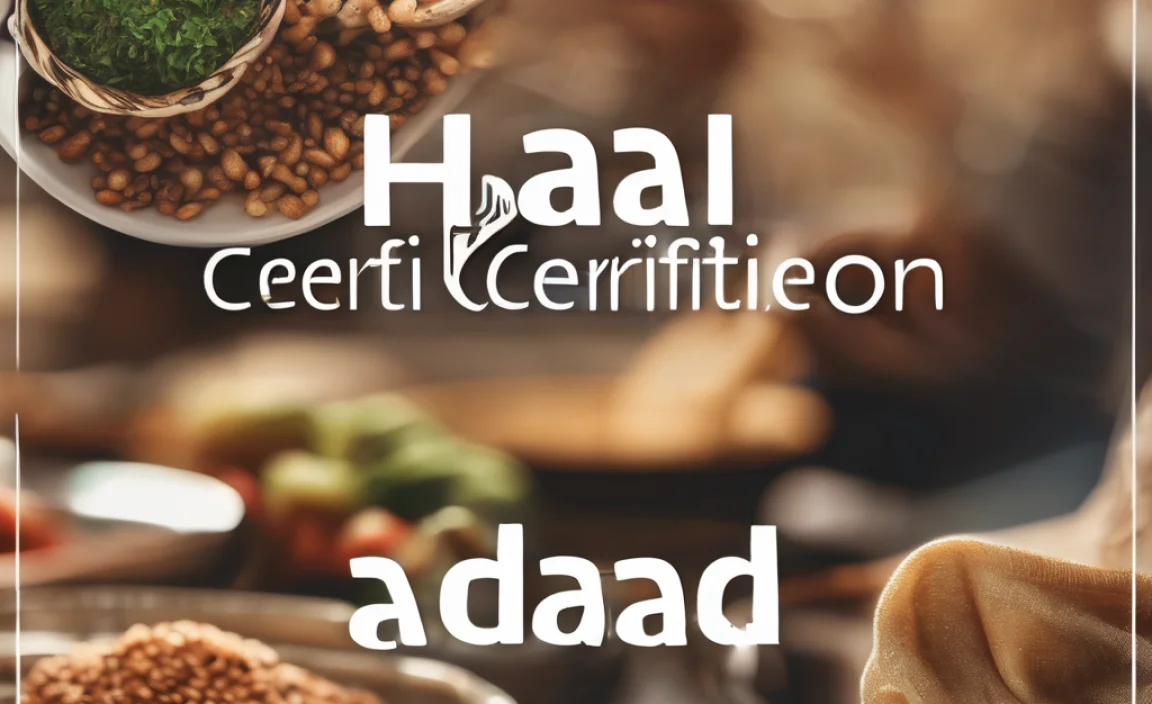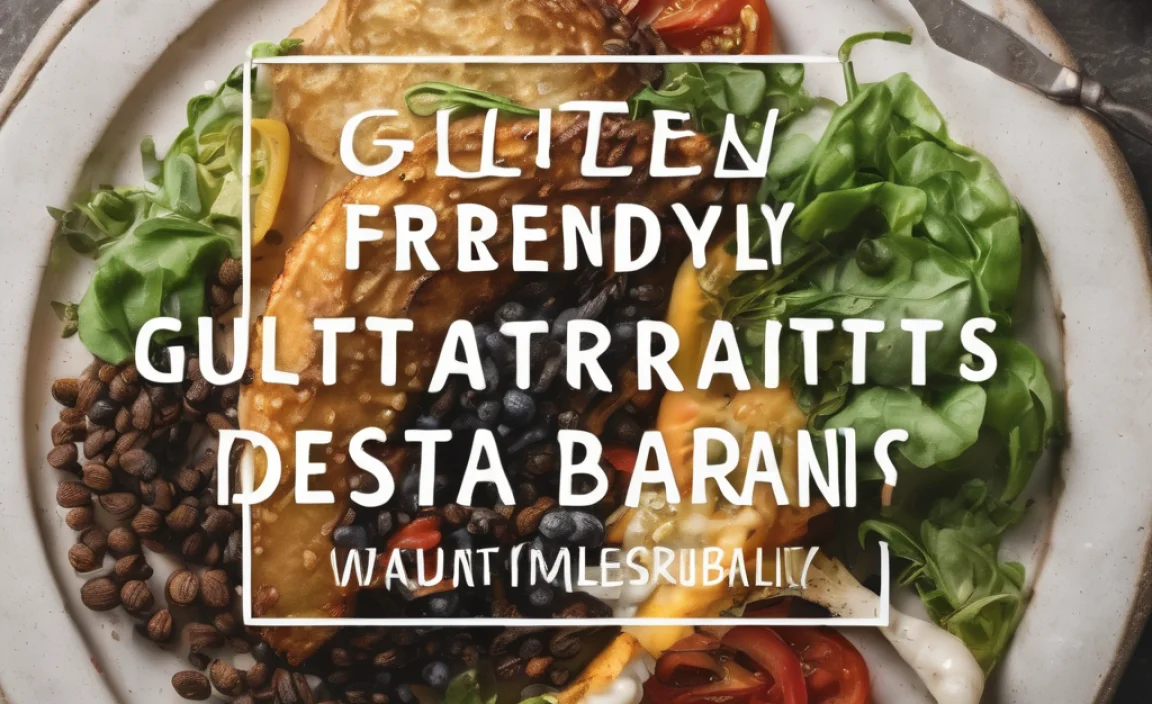Master the art of Iberico ham slicing for an unparalleled culinary experience. This guide breaks down essential skills for perfect cuts every time.
Ever stared at a beautiful leg of Iberico ham and felt a little intimidated? You’re not alone! The thought of slicing this prized delicacy can seem daunting, but it doesn’t have to be. With the right tools and a few simple techniques, you can unlock its incredible flavors and enjoy it like a true connoisseur. Forget those unevenly cut pieces; we’re going to show you how to achieve paper-thin, melt-in-your-mouth slices that will wow your guests and elevate any meal. Ready to become an Iberico ham slicing pro? Let’s dive in!
What is Iberico Ham? A Quick Flavor Profile
Before we get our hands (or knives) dirty, let’s talk about what makes Iberico ham so special. Iberico ham, often referred to as “jamón Ibérico,” is a type of cured ham from Spain. It’s made from the hind legs of black Iberian pigs, which are raised in dehesas – pastures dotted with oak trees. The pigs’ diet, especially the acorns (bellotas) they eat during the “montanera” season, gives the ham its distinctive nutty flavor and rich marbling.
There are different classifications of Iberico ham, primarily based on the pig’s diet and breed.
| Classification | Pig’s Diet | Flavor Profile | Appearance |
|---|---|---|---|
| Jamón de Bellota 100% Ibérico | Free-range, acorns (bellotas) and natural grasses. | Intense, complex, nutty, rich, slightly sweet. Deeply savory. | Intense marbling, dark red meat, distinct fat pockets. |
| Jamón de Bellota Ibérico | Free-range, acorns (bellotas) and natural grasses (pigs are at least 50% Iberian breed). | Rich, nutty, complex, very flavorful. | Significant marbling, red meat, good fat distribution. |
| Jamón de Cebo de Campo Ibérico | Fed a mix of grain, natural grasses, and some acorns. Raised in semi-free range conditions. | Milder nutty notes, balanced, savory. Good depth of flavor. | Less marbling than Bellota, but still good fat content. |
| Jamón de Cebo Ibérico | Fed a grain-based diet. Raised in controlled farm environments. | More straightforward pork flavor, less complex, savory. | Least marbling among Iberico types, but still a pleasant texture. |
Regardless of the specific type, the quality of Iberico ham is exceptional. The fat content is high, but it’s rich in monounsaturated fats – the “good fats” found in olive oil. This fat melts at room temperature, making each slice incredibly succulent and smooth on the palate.
Essential Tools for Slicing Iberico Ham
To properly slice Iberico ham, you’ll need a few key tools. These aren’t just fancy gadgets; they’re designed to make the job easier, safer, and ensure you get those perfect slices. Think of them as your essential partners in this culinary adventure!
- Jamón Holder (Jamonero): This is a must-have. A good jamón holder stabilizes the ham, allowing you to cut safely and efficiently. They come in various designs, from simple wooden stands to more robust, adjustable metal ones. Look for one that feels sturdy and can accommodate the shape of the ham leg. Some also have a “swiveling” or “rotating” mechanism, which is incredibly helpful for turning the ham as you cut. For more information on selecting a jamonero, you can explore resources from Spanish culinary sites.
- Long, Flexible Slicing Knife (Cuchillo Jamonero): This knife is specifically designed for slicing ham. It’s long, narrow, and thin, allowing you to make clean, precise cuts with minimal effort. The flexibility helps it glide along the bone and through the meat without tearing. A good quality ham knife is an investment that will serve you well.
- Sharpening Steel/Stone: A sharp knife is a safe knife. Keeping your ham knife in top condition is crucial for clean cuts and preventing slippage. A sharpening steel is great for quick touch-ups, while a stone is for more thorough sharpening.
- Small Paring Knife: You’ll use this for trimming excess fat and getting into tighter spots, especially around the bone.
- Clean Cloths or Paper Towels: For wiping the knife and cleaning up any excess grease or juices.
Step-by-Step: The Iberico Ham Cutting Masterclass
Now for the main event! Follow these steps carefully, and you’ll be slicing like a seasoned professional in no time. Remember, patience is key here. It’s not a race; it’s about enjoying the process and savoring the result.
1. Preparing the Ham and Holder
The first step is to get your ham ready and secure it in its holder. This lays the foundation for a smooth slicing experience.
- Place the Jamonero: Find a stable surface, like a countertop or a sturdy table, where you can comfortably work. Place the jamón holder on this surface.
- Position the Ham: Carefully lift the ham. The “hoof” (the dark, natural part of the leg) should point upwards. This is the traditional “seasoning” position and helps when starting to slice. Insert the pointed end of the jamón holder’s base into the thicker end of the ham (the one opposite the hoof).
- Secure the Ham: Adjust the post or support at the other end of the jamonero to firmly hold the ham in place. It shouldn’t wobble at all. Test its stability by gently trying to move it.
2. The Initial Trim: Removing the Outer Rind
Iberico ham is covered in a tough outer rind and excess fat. You need to expose the delicious meat underneath without removing too much valuable fat. The fat is crucial for flavor and texture!
- Identify the Cutting Zone: You’ll be working in sections. For the first few slices, you’ll need to remove the outer layer of yellow-ish rind and thick, hard fat from the “crema” or “caña” side (the wider, meatier part of the ham).
- Start Trimming: Using your smaller paring knife or the tip of your ham knife, carefully slice away the very thick, yellow outer rind. Aim to expose the softer, pinkish fat layer just beneath it. Don’t remove all the fat! The white fat is where a lot of the flavor resides. For the first few slices, you’ll want to expose a good amount of this fat layer.
- Cut Only What You Need: A common mistake is to remove too much rind and fat at once. Only trim enough to get your first few slices. This keeps the rest of the ham protected and prevents it from drying out.
3. Making the First Cuts: The “Master Slice”
The first few slices are often the most challenging and the most rewarding. They set the tone for the rest of the ham.
- Orient the Ham: Ensure the ham is positioned correctly in the holder, with the hoof pointing upwards and the wider, meatier side facing you.
- Start Slicing: Take your long ham knife. Place it at the top edge of the exposed meat, where you removed the rind.
- The Motion: Use long, smooth strokes, pulling the knife towards you. The goal is to create long, very thin slices. Imagine you’re gently shaving the meat. The knife should be almost parallel to the ham’s surface.
- Aim for Thinness: Iberico ham is best enjoyed in paper-thin slices that almost dissolve on your tongue. Don’t be afraid to let the fat marbling melt into the meat as you slice.
- Follow the Grain: Observe the direction of the muscle fibers. Try to cut against the grain for the most tender texture.
4. Navigating the Bone
As you work down the ham, you’ll encounter the bone. This is where the jamonero and the flexibility of your knife really come into play.
- Angle Your Knife: When you reach the bone, angle your knife slightly to work around it. The flexibility of the ham knife allows you to get close to the bone without wasting meat.
- Use the Paring Knife: For intricate areas around the bone, your small paring knife can be invaluable for getting those last bits of delicious meat.
- Clean as You Go: As you cut, use a clean cloth to wipe any excess fat or juices from the knife. This helps maintain a clean cut.
5. Slicing the “Maza” and “Balerdo”
The ham leg has different sections with varying fat content and flavor. The “maza” is the largest and most meat-rich part, while the “bálMaza” is the smaller, fattier section. The “babilla” is the leaner side.
- The Maza: This is your prime slicing territory. Continue making long, thin slices, working down this meaty section.
- The BálMaza & Babilla: Once you’ve worked through the maza, you’ll need to flip the ham.
- Flipping the Ham: Loosen the ham from the jamonero by adjusting the support post. Carefully rotate the ham so the hoof is now pointing downwards. Re-secure it firmly.
- Trimming the Other Side: Remove the rind and excess thick fat from this side, exposing the meat and fat layers.
- Continue Slicing: Repeat the slicing process, making thin cuts and working around the bones. The bálMaza might be fattier, so you’ll get lovely, gelatinous slices. The babilla is leaner.
6. Storing Your Iberico Ham
Proper storage is crucial to maintain the quality and freshness of your Iberico ham between carving sessions.
- Cover the Cut Surface: This is arguably the most important rule! Use some of the large pieces of the cured fat you removed earlier to cover the exposed meat surface. Fats protect the meat from oxidation and drying out.
- Add a Protective Cloth: After covering with fat, drape a clean kitchen towel or cheesecloth over the exposed area.
- Wrap the Ham: If you have a specific ham bag, use that. Otherwise, you can loosely wrap the leg in parchment paper and then in a clean kitchen towel. The goal is to protect it from light and air but allow it to breathe slightly.
- Storage Location: Store the ham in a cool, dry place. A wine cellar is ideal, but a cool pantry or a dedicated space in your refrigerator (if it’s not too cold and humid) can work. Avoid storing it in plastic film wrap for long periods, as this can affect the curing process and the fat’s texture.
Pro Tip: Some people find using a dedicated Spanish ham cover, often made of treated cotton, helps preserve the ham without trapping moisture.
Understanding the Fat: Why It’s So Important
Iberico ham’s fat is not something to be feared; it’s the soul of its flavor! The generous marbling you see is packed with monounsaturated fats, similar to those found in olive oil. These fats contribute to the ham’s distinctive:
- Melting Texture: The fat melts at room temperature, giving the ham a luscious, smooth mouthfeel.
- Nutty Aroma: The complex aromas are largely derived from the breakdown of these fats, often infused with notes of roasted nuts from the acorns.
- Rich Flavor: The fat carries the flavor compounds, ensuring that each bite is deeply savory and satisfying.
When slicing, don’t shy away from including a bit of this white fat with each slice of meat. It enhances the overall experience and is a signature characteristic of true Iberico ham.
Troubleshooting Common Iberico Ham Cutting Issues
Even with the best intentions, you might encounter a few snags. Here’s how to handle them:
| Problem | Cause | Solution |
|---|---|---|
| Slices are too thick. | Knife not sharp enough; incorrect slicing angle; trying to slice too fast. | Sharpen your knife. Use long, smooth strokes with the knife held almost parallel to the surface. Slow down and focus on shaving the meat. |
| Ham is drying out. | Exposed meat not properly covered after carving; stored incorrectly. | Always cover the cut surface with removed fat, then a cloth. Store in a cool, dry place with appropriate covering. |
| Knife is sticking or tearing the meat. | Dull knife; ham is too cold. | Ensure your knife is razor-sharp. Allow the ham to sit at room temperature for 15-30 minutes before slicing to soften the fat slightly. |
| Difficulty getting close to the bone. | Using the wrong knife; ham not secured properly. | Use a flexible ham knife (cuchillo jamonero). Ensure the jamonero is stable and at a comfortable working angle. |
| Too much fat removed. | Over-trimmimg the rind and hard fat. | Only remove the thick, yellow outer rind and very hard fat. Preserve the softer white fat that is marbled within the meat. |
Enjoying Your Iberico Ham
The “hardest” part is over – you’ve sliced your Iberico ham! Now, how do you best enjoy it?
- Temperature: Serve at room temperature. Cold ham will taste bland and the fat will be hard, masking its beautiful texture. Let slices sit out for about 15-20 minutes before serving.
- Simplicity is Key: The best way to appreciate Iberico ham is on its own. Arrange thin slices on a platter, ensuring they don’t overlap too much.
- Pairings: If you want to accompany it, choose simple accompaniments that won’t overpower its flavor. Crusty bread, a good olive oil, a few olives, or some lightly seasoned melon slices are classic choices.
- Beverages: Wine pairings are perfect. A dry Spanish sherry (like Fino or Manzanilla), a light-bodied Rioja, or even a crisp Albariño can complement the ham beautifully.
For more insights into Spanish culinary traditions, resources like the official Spanish government tourism website often provide excellent cultural context.
Frequently Asked Questions About Iberico Ham Cutting
Q1: How long does it take to slice an Iberico ham?
An experienced slicer can do it in under an hour, but for beginners, it might take 1-2 hours. The key is to take your time and enjoy the process!
Q2: Do I need to trim off all the fat?
Absolutely not! The white fat is crucial for flavor and texture. Only remove the thick, yellow outer rind and very hard fat. Preserve the marbling.
Q3: How do I keep my Iberico ham fresh after cutting?
Cover the cut surface with the ham’s own fat, then a clean cloth, and store in a cool, dry place or refrigerator. Avoid plastic wrap directly on the meat.
Q4: What’s the best way to store a whole Iberico ham?
Keep it in its original packaging or a ham bag, in a cool, dry, dark place. If you must refrigerate, ensure it’s well-covered to prevent drying.
Q5: Can I freeze Iberico ham slices?
It’s not recommended. Freezing can alter the texture and flavor of the delicate fat. It’s best enjoyed fresh.
Q6: How thin should Iberico ham slices be?
As thin as possible – almost translucent, like paper. This allows the fat to melt in your mouth, releasing the full flavor.
Q7: Is it okay to wash the Iberico ham leg before cutting?
No, it’s a cured product and is not meant to be washed. The outer rind is tough and was part of the curing process. Just wipe off any dust with a dry cloth.
A Culinary Adventure Acknowledged
Embarking on the journey of slicing Iberico ham is more than just





